Fiat 500 vs Renault Captur - Differences and prices compared
Costs and Efficiency:
Price and efficiency are key factors when choosing a car – and this is often where the real differences emerge.
Fiat 500 has a to a small extent advantage in terms of price – it starts at 18800 £, while the Renault Captur costs 21100 £. That’s a price difference of around 2280 £.
Fuel consumption also shows a difference: Renault Captur manages with 4.50 L and is therefore somewhat more efficient than the Fiat 500 with 5.30 L. The difference is about 0.80 L per 100 km.
Engine and Performance:
Under the bonnet, it becomes clear which model is tuned for sportiness and which one takes the lead when you hit the accelerator.
When it comes to engine power, the Renault Captur has a somewhat edge – offering 143 HP compared to 118 HP. That’s roughly 25 HP more horsepower.
In acceleration from 0 to 100 km/h, the Renault Captur is minimal quicker – completing the sprint in 8.90 s, while the Fiat 500 takes 9 s. That’s about 0.10 s faster.
In terms of top speed, the Renault Captur performs slightly better – reaching 180 km/h, while the Fiat 500 tops out at 155 km/h. The difference is around 25 km/h.
There’s also a difference in torque: Renault Captur pulls a bit stronger with 265 Nm compared to 220 Nm. That’s about 45 Nm difference.
Space and Everyday Use:
Beyond pure performance, interior space and usability matter most in daily life. This is where you see which car is more practical and versatile.
Seats: Renault Captur offers a bit more seating capacity – 5 vs 4.
In curb weight, Fiat 500 is somewhat lighter – 1141 kg compared to 1323 kg. The difference is around 182 kg.
In terms of boot space, the Renault Captur offers convincingly more room – 422 L compared to 185 L. That’s a difference of about 237 L.
In maximum load capacity, the Renault Captur performs convincingly better – up to 1363 L, which is about 813 L more than the Fiat 500.
When it comes to payload, Renault Captur noticeable takes the win – 453 kg compared to 325 kg. That’s a difference of about 128 kg.
Who comes out on top?
Overall, the Renault Captur shows itself to be is largely superior and secures the title of DriveDuel Champion.
It convinces with the more balanced overall package and proves to be the more versatile choice for everyday use.
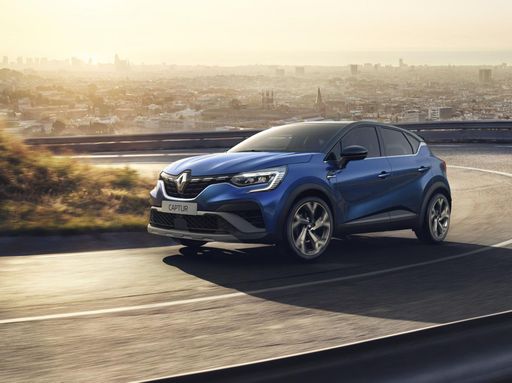 @ Renault Group Media
@ Renault Group Media
Renault Captur
Costs and Consumption
View detailed analysis
Engine and Performance
View detailed analysis
Dimensions and Body
View detailed analysis
Fiat 500
The Fiat 500 is a cheeky, retro‑styled city car that turns heads with its iconic looks and playful personality. Perfect for weaving through tight streets and easing into tiny parking spots, it’s aimed at buyers who want style and character more than grand touring prowess.
details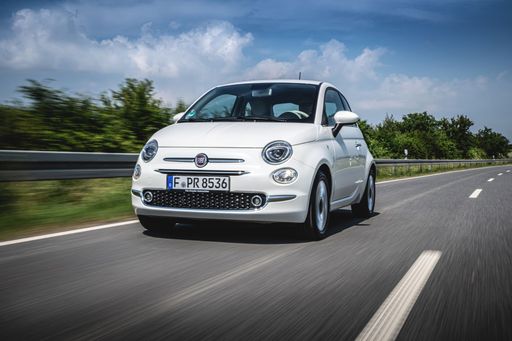 @ Fiat / Stellantis Media
@ Fiat / Stellantis Media
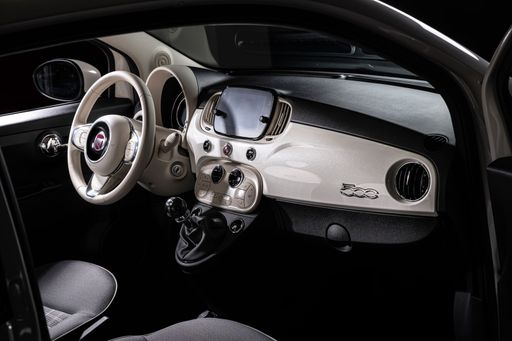 @ Fiat / Stellantis Media
@ Fiat / Stellantis Media
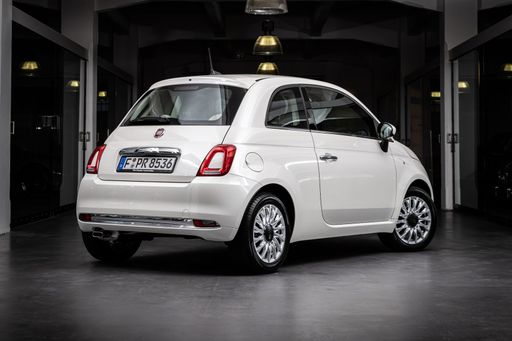 @ Fiat / Stellantis Media
@ Fiat / Stellantis Media
Renault Captur
The Renault Captur is a cheeky little crossover that pairs city-friendly agility with a roomy, well-thought-out cabin and enough style to turn heads at the lights. It’s a sensible choice for buyers who want practical versatility and a dash of personality on their daily drives, without taking itself too seriously.
details @ Renault Group Media
@ Renault Group Media
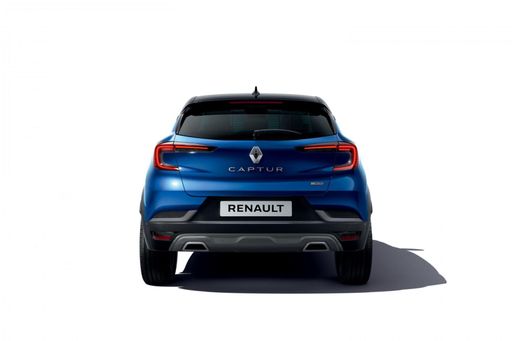 @ Renault Group Media
@ Renault Group Media
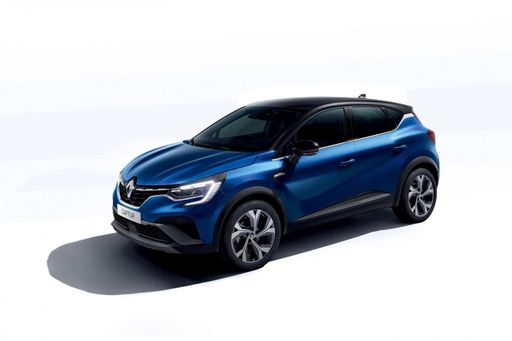 @ Renault Group Media
@ Renault Group Media
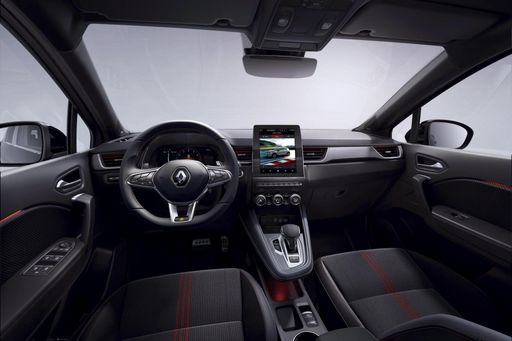 @ Renault Group Media
@ Renault Group Media
 @ Fiat / Stellantis Media
@ Fiat / Stellantis Media
|
 @ Renault Group Media
@ Renault Group Media
|
|
|
|
Costs and Consumption |
|
|---|---|
|
Price
18800 - 30800 £
|
Price
21100 - 28300 £
|
|
Consumption L/100km
5.30 L
|
Consumption L/100km
4.5 - 6 L
|
|
Consumption kWh/100km
13 - 14.7 kWh
|
Consumption kWh/100km
-
|
|
Electric Range
190 - 331 km
|
Electric Range
-
|
|
Battery Capacity
21.3 - 37.3 kWh
|
Battery Capacity
-
|
|
co2
0 - 120 g/km
|
co2
102 - 137 g/km
|
|
Fuel tank capacity
-
|
Fuel tank capacity
48 L
|
Dimensions and Body |
|
|---|---|
|
Body Type
Hatchback
|
Body Type
SUV
|
|
Seats
4
|
Seats
5
|
|
Doors
3 - 4
|
Doors
5
|
|
Curb weight
1141 - 1475 kg
|
Curb weight
1323 - 1514 kg
|
|
Trunk capacity
183 - 185 L
|
Trunk capacity
326 - 422 L
|
|
Length
3631 - 3632 mm
|
Length
4239 mm
|
|
Width
1683 - 1684 mm
|
Width
1797 mm
|
|
Height
1527 - 1532 mm
|
Height
1575 mm
|
|
Max trunk capacity
440 - 550 L
|
Max trunk capacity
1276 - 1363 L
|
|
Payload
250 - 325 kg
|
Payload
376 - 453 kg
|
Engine and Performance |
|
|---|---|
|
Engine Type
Electric, Petrol MHEV
|
Engine Type
Full Hybrid, Petrol, Petrol MHEV
|
|
Transmission
Automatic, Manuel
|
Transmission
Automatic, Manuel
|
|
Transmission Detail
Reduction Gearbox, Manual Gearbox
|
Transmission Detail
Automatic Gearbox, Manual Gearbox, Dual-Clutch Automatic
|
|
Drive Type
Front-Wheel Drive
|
Drive Type
Front-Wheel Drive
|
|
Power HP
65 - 118 HP
|
Power HP
115 - 143 HP
|
|
Acceleration 0-100km/h
9 - 16.2 s
|
Acceleration 0-100km/h
8.9 - 12.3 s
|
|
Max Speed
135 - 155 km/h
|
Max Speed
180 km/h
|
|
Torque
220 Nm
|
Torque
160 - 265 Nm
|
|
Number of Cylinders
3
|
Number of Cylinders
3 - 4
|
|
Power kW
48 - 87 kW
|
Power kW
84 - 116 kW
|
|
Engine capacity
999 cm3
|
Engine capacity
1199 - 1789 cm3
|
General |
|
|---|---|
|
Model Year
2023 - 2025
|
Model Year
2025
|
|
CO2 Efficiency Class
A, D
|
CO2 Efficiency Class
C, D, E
|
|
Brand
Fiat
|
Brand
Renault
|
What drivetrain options does the Fiat 500 have?
The Fiat 500 is offered with Front-Wheel Drive.
The prices and data displayed are estimates based on German list prices and may vary by country. This information is not legally binding.
